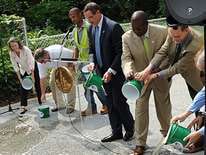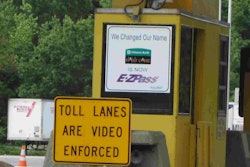
Washington, D.C. Mayor Vincent C. Gray on June 11 joined officials from the District Department of Transportation (DDOT) and the District Department of the Environment (DDOE), and watched as workers poured water on a newly constructed alley in Northeast Washington to demonstrate how stormwater seeps into the permeable surface rather than running into storm drains – helping cut one of the major causes of waterway pollution.
With the U.S. Environmental Protection Agency creating even more stringent regulations on stormwater, it’s important that contractors, aggregates operations or any construction site manager must understand how to manage stormwater.
The Green Alley Pilot is part of the Mayor’s Sustainable D.C. initiative to make the District the nation’s greenest, healthiest, most livable city. The alley project — a partnership between DDOT and DDOE — is aimed at reducing the quantity and improving the quality of stormwater runoff within the District’s right-of-way.
“The water disappears, but it’s not a magic trick — it’s smart, green, cutting-edge urban design that puts the District at the forefront of sustainable practices nationwide,” Gray said in a written statement. “Improving the health of our rivers and streams starts in our neighborhoods with creative solutions like these green alleys.”
DDOT constructed its pilot green alleys by replacing gravel, impervious concrete or asphalt surfaces with permeable concrete. Permeable pavement has pores or openings that allow water to pass through the surface, then percolate down through a gravel layer and into the soil below rather than running off into sewers.










